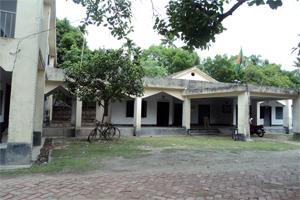-
প্রথম পাতা
-
About Union
ইউনিয়ন পরিচিতি
ভৌগলিক ও অর্থনৈতিক
Miscellaneous
-
Union Parishad
Union Council
ইউনিয়ন পরিষদ কার্যক্রম
Village Adalat
গুরুত্বপূর্ণ তথ্য
-
Govt. Office
ভূমি
স্বাস্থ্য সেবা
-
Other Institutions
Educational Institutions
Religious Organizations
Organizations
-
Different Lists
List of Beneficiaries
Other listings
- Projects
-
Services
UDC
National E-Service
- Gallery
Geographic contact Geography of Magura district Location Magura district Magura is located in 23 ° 29 minutes north latitudes and 89 degrees 26 minutes east longitude. Faridpur to the north of the district, Jessore on the south, Narail Faridpur district on the east and Jhenaidah district on the west. Magura district is 26 feet high from the sea level. Volume The total area of the district is 1030.58 sq km. The population density is 787 per square lomo Landscape Magura, the most recent district of Bangladesh, is the proud district of Amravati. Like other sources of Bangladesh, Magura district has been created in the new geological age, ie 70 thousand years ago. Originally, the Delta region was proud by saving the river bank. The river is the source of the river, so the area is silt. Low area of a district of Mohammadpur upazila on the east. Geological structure Almost the entire part of the Magura district except the eastern region is equal to the height. Magura district is formed by 4th monsoon sediment storage. Avidavu plain The review of the soil of this district shows that there are muded sediments and dry silk at the top level. This level is 50 feet deep and 150 feet deep. At the next level, there are medium-sized dolls with dry polys. In Magura district, Padma and its two main branches have contributed a lot to the Garai Madhumati of breaking the head of the river. Anthropological The identity of the ethnic identity of the people living in Magura is not so obvious. It is assumed that there is a mixture of here, Dravid, Mongolia, Australell, and the population of the population. Just like the large population of Bangladesh, people's color, color, physical, size, hair, eyes etc. in this district. River-river Madhumati / Garai, Kumar, Nabaganga, Chitra, Fateki, Mukhikhali etc. are main rivers of Magura. At one time, the Arafani Mug bandits came to Magura in these rivers, looting them. By importing and exporting domestic and foreign goods through boats and ships. So easily understandable that these rivers were flowing at one time. Now every river has lost its navigability. Soil Magura is formed by the Himalayan climates carried by the river Padma and its branches. The top of this soil consists of fine grains of sediment and mud. The lower level of it is rich with thick grains. Depending on the quality of the soils and characteristics and the original rock, the soil of Magura district is divided into three parts. Namely- A) The lime dark gray soil of the world land is seen in the eastern part of the district. B) Chuangya Badihi Soil of Pospan Bhabha which is seen in the west of the district. C) Peat soils which are found in the lower regions of the district. Climate Magura's climate is equally prosperous. The winter is dry and warm, warm and arid. Seasonal air flows through this district during the summer and then the maximum moisture is observed. There are plenty of rain at this time. Occasionally rain falls in the months of November-December, due to the cyclone coming from the Bay of Bengal. In the summer, the effect of Baishakhi on the eve of the day is clear here. natural disaster Floods arose in Magura district in 1943, 1949, 1985, 1986, 1987, 1988, 1990, 2004.
Planning and Implementation: Cabinet Division, A2I, BCC, DoICT and BASIS









